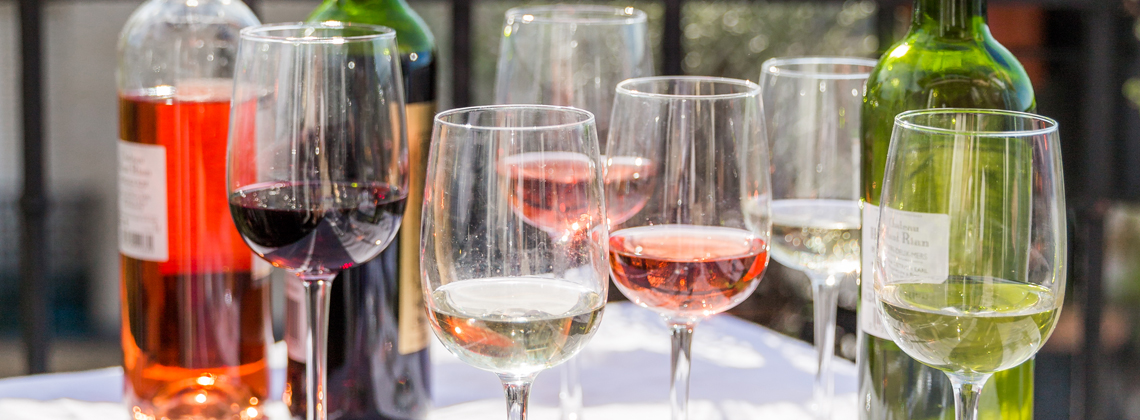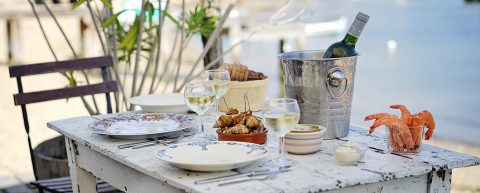Word on the Vine – In Conversation with Nea Berglund of Château Carsin
Young, dynamic and a force for change, Nea Berglund isn’t your traditional vigneron. The Finnish-born winemaker, who, as a teenager, used to travel from her native Finland to Bordeaux to take part in the harvest at her father’s château in Cadillac Côtes de Bordeaux, is on a mission to convert her family’s 20ha estate to organic. Last week we sat down to discuss everything from amphoras to Christmas day wine matches.
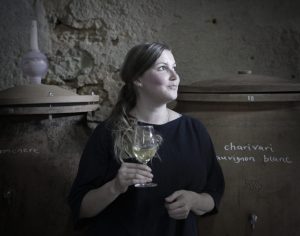
You’ve been in charge of all activity in the winery at Château Carsin since 2015, what made you want to follow in the family business and become a winemaker?
Even though I’ve been coming to Bordeaux all my life and worked the harvest at Château Carsin since I was a teenager, I never thought I’d end up at the family winery. As a student, I worked in restaurants and got very into wine. I loved working with people, getting to know wines from around the world, and of course, I also had the opportunity to do harvest every autumn. I applied to sommelier school but decided to work the harvest in Australia in 2015 instead.
While I was working at Jones Vineyard & Winery in Rutherglen, with Mandy Jones, Château Carsin’s former winemaker, I got an idea of what the work entailed. Making wine and running a farm requires hard work. The hours are long but it is my passion. Mandy was vital to my wine education and really made me think about the winemaking process on my own. I still admire her courage and strength, which is what keeps me going when I’m tired! I still consider her partially responsible for my career path, and I believe my father owes her a few cases of wine because of that!
What is your philosophy behind winemaking and what do you think you have brought to Château Carsin?
My father started organic viticulture in 2003 with a few organic parcels and the area has grown over time. Since I arrived in 2015, I have converted the entire vineyard to organic viticulture, as well as starting my own natural wine brand, Charivari Wines. Our philosophy is to make wines that reflect our different terroirs; they are naturally made without enzymes, sugar or acidity additions. I have always had an experimental mindset when it comes to wine and as a result, I’ve made some fairly non-traditional wines in Bordeaux, such as skin-contact Sauvignon Blanc in amphoras, rosé wine from Malbec, 100% Carménère and other fun stuff.
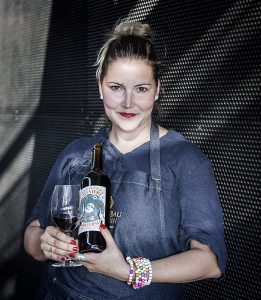
Château Carsin is renowned for replanting historic Bordeaux varietals such as Sauvignon Gris, Malbec, Carménère and Petit Verdot, can you tell us more about your work with these grape varieties?
I always say that because we’re not a traditional French family with hundreds of years of heritage, we don’t feel the same pressure to adhere to tradition or copy what others are doing. My father has always been keen on planting Bordeaux’s historical varieties. Carménère and Petit Verdot are both Bordeaux varieties, but Carménère in particular is grown in very small quantities. It’s tricky to work with and the yields are low, but it’s beautiful with such a powerful spicy character! I’ve been making a 100% Carménère in amphoras for a few years now. Also, these red varieties are key ingredients for our six-grape blend Cuvée Noire, which is our most well-known red wine.
Regarding the white varietals, we’ve tried several things too, but now we work with Sauvignon Blanc, Sémillon and the rare Sauvignon Gris. There are only a few producers who make a 100% Sauvignon Gris, and this wine, our L’Etiquette Grise, is our most popular white wine. It has exotic fruit aromas and beautiful length and it shows its own character of the extraordinary Sauvignon Gris.
In recent years you have been experimenting with amphoras, what effect does this have on the finished wine and will you be bringing more amphoras into the winery?
It all started with the idea of making the most authentic wine possible. I’m keen on showing the true characters of the vineyards in our wines. The amphora seemed like a perfect container to make authentic wines in. I have six amphoras and I’ve been making three wines from them, a skin-contact Sauvignon Blanc for Charivari Wines called L’Amour Fragile, a 100% Carménère and a 100% Cabernet Franc for Château Carsin. The red wines have pure, authentic characters of the grape varieties and L’Amour Fragile (‘Fragile Love’) is just the most non-traditional white wine from Bordeaux with rich and bold structure.
The amphora is neutral in terms of taste: it doesn’t add tannins or oak characters to the wine like barrels do. The stainless-steel tanks are neutral too of course, but they don’t breathe like barrels. The amphora puts together the neutral taste of stainless-steel and the micro-oxygenation of oak barrels – the best of both worlds! Our amphora wines are beautiful and rare wines, but they require loads of work. At the moment I very much like making wine in the amphoras, but I also love my barrels and want to keep the amphoras an exclusive, small range of special wines.
In the vineyard, the team has really focused on biodiversity, from cover crops to animals roaming between the vines, what impact has this had on the vineyard and the wines?
For me, Château Carsin is more of a farm than just a château and winery. We have chicken and horses roaming the vineyards, and we have plenty of fruit trees – cherries, figs, apples, peaches and apricots, you name it! In the future, I want to diversify the production and make other craft produce, perhaps juices and jams! I’m also training my work horse to work a bit in the vineyards, but that’s just for the fun of it.
Organic production has definitely had an impact on the Château Carsin philosophy over the past 20 years, and it is now very much engrained. We are organic not only because of the final product (the wine of course), but because we want to take care of our environment and our employees, our neighbours and future generations. I also feel like our team is more dedicated now that the manual work is so much more important. They are proud to be a part of it and we all share the feeling that our small efforts are now more important than ever. With this combination of precision and hard work, great wines can be made.
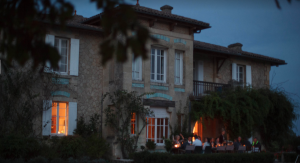
Having been a tough year for many, most people are looking forward to some fun this festive season, do you have any Christmas traditions at the Château?
At Château Carsin, we have our traditional “pre-Christmas party” a few weeks before Christmas. As we are a Finnish family (and you know Santa Claus lives in Finland), it’s our pleasure to show the locals a part of a Finnish Christmas. Our cellar door remains open for one weekend, there are free tastings of all our wines, promotions, Christmas music and lovely decorations with a big Christmas tree. We also offer Finnish mulled wine, gingerbread and chocolates for all. It’s a lovely celebration and a great opportunity to see all the neighbours and friends before the holidays. On Christmas Eve, we eat a Finnish Christmas lunch with lots of salmon, herring, shrimps with crispy white wine and then in the evening we cook a small ham and have it with carrots, potatoes and gravy. The best part of the ham are the sandwiches we make the next day.
And what will you be serving? What are your favourite Christmas food and wine matches?
I love Christmas time and for me, Christmas is all about good food and wine. I want to spend my holidays relaxing at home, going on long horse-rides and drinking good wines by the fireplace, in the evenings. I love different cheeses and a rich blue cheese such as Roquefort or Stilton is a perfect match with our sweet wine Cadillac. The wine is filled with aromas of honey, apricot and orange peel and it complements the salty, rich cheese beautifully. Sometimes I make it into a quiche to make it a bit creamier and easier to serve for friends and family.
Thanks so much to Nea for taking the time to chat to us, you can find out more about Château Carsin here.
Follow us on Twitter, Instagram & Facebook @bordeauxwinesuk
